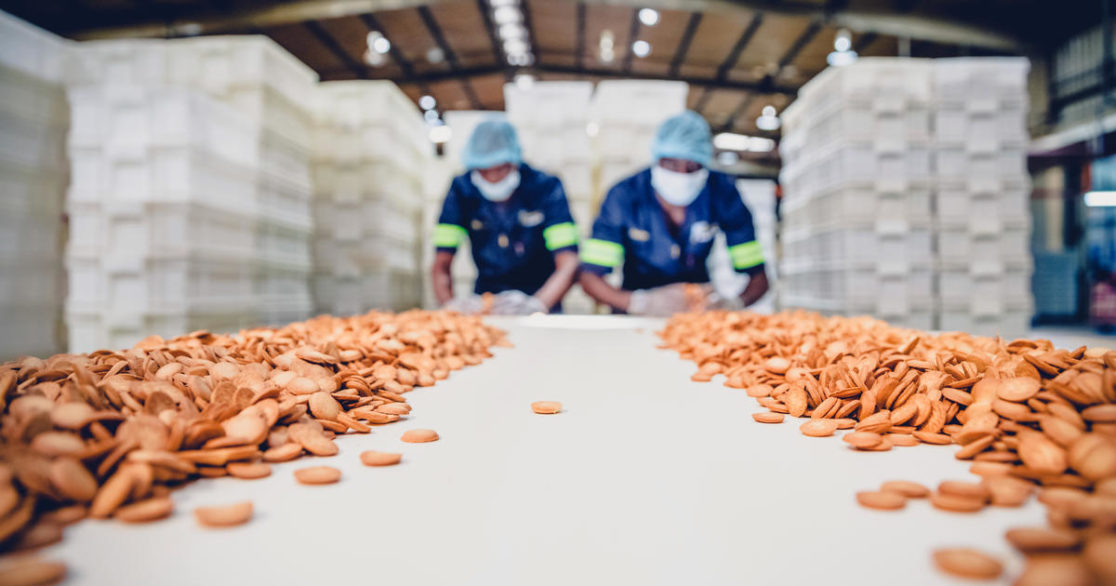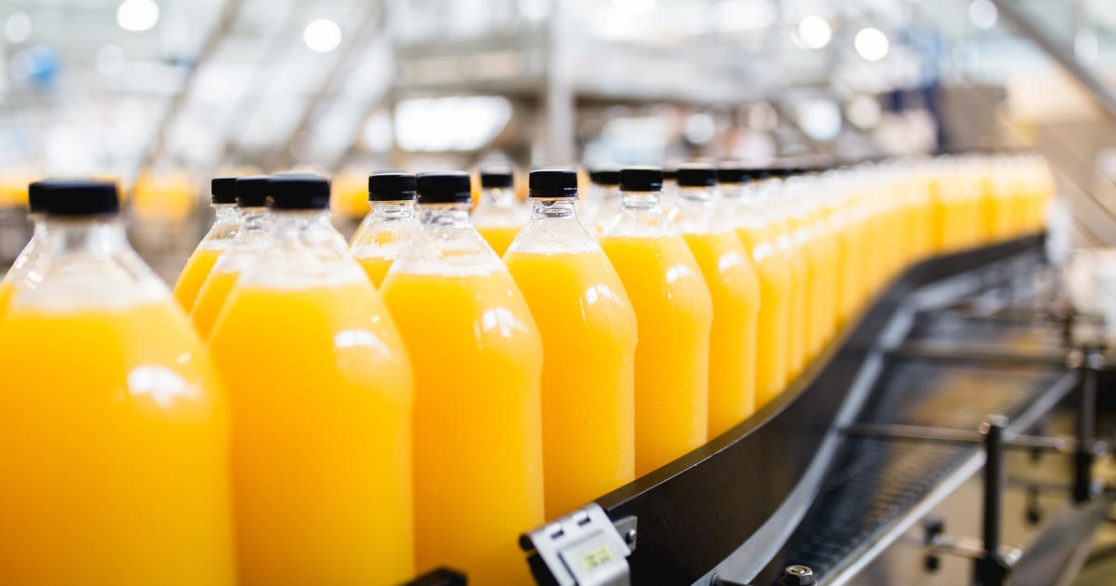Everybody wants sustainable products, and retailers are putting pressure on manufacturers to deliver goods that satisfy consumers’ new preference for green and clean options.
This means manufacturers need to implement technology to track where their products come from and what they are made of. They will also need to plan around shorter shelf lives that result from fewer additives and preservatives. The upside will be a revitalized industry with increased revenues and the opportunity for insurgent companies to challenge the huge consumer packaged goods (CPG) giants.
Prediction 1: Practical sustainability
In the past, it may have been enough for manufacturers to pay lip service to sustainability, consumers are now reading labels and considering environmental impact in their buying decisions. They are willing to pay more for clean-label and sustainable products. The food and beverage industry is no exception, as people shopping at supermarkets and noting the disappearance of single-use plastic will attest. However, there are trade-offs to be made.
Lumina Intelligence, for example, has published a report suggesting that the industry has made 905 sustainability promises over the last 12 months. Setting sustainability targets and making promises is, of course, commendable, however, there is still work to be done by the industry to turn these promises into deliverables.

One example is single-use plastics, which have in recent years become deeply unpopular, and for good reason; they end up in the rivers, streams and oceans, strangle wildlife or break up into micro plastics that get even further into the food chain. However, take the plastic wrapping away from food and it is more likely to spoil before it even gets to market and its shelf life will be significantly compromised. So, without plastics or a bio-friendly alternative, food waste will increase.
Nonetheless, retailers are listening to their customers and reducing packaging. British retail chain Marks and Spencer has reduced its own packaging by 37 percent since 2017. In various laboratories, scientists are developing starch and vegetable-based packaging that works well with some food products but not all. In order to satisfy environmentally-conscious consumers, a number of supermarkets such as Waitrose in the UK, have stated their aim of following the examples set by grocery stores such as GRAM in Sweden and Original Unverpackt in Germany in reducing waste of some products to zero. Greenpeace has started ranking United States-based supermarket chains on their plastic reduction efforts, with value-oriented Aldi U.S. taking the number one spot in 2019.
Retail buyers also want to buy clean-label foods—products sustainably made of natural, simple ingredients with minimal or no preservatives or artificial colors or flavors. Once a differentiator, clean labels are now the cost of entry, for many retail categories, according to a 2019 clean label study by Kerry. The study also finds that some label elements, like non-GMO, have become less important.

One of the factors essential to consumer perception of the sustainability of foods is accurate and clear labeling, which can be a lifesaver for products that otherwise may be banned as unsustainable, like palm oil. The Round Table for Sustainable Palm Oil, for instance, has established a proprietary label that indicates that the palm oil was grown sustainably on existing, cultivated acreages using best practices instead of through clear cutting of the rainforest. While industry organization FoodDrinkEurope published a report that urges transparency, there is a notable lack of focus on comprehensibility. For example, a package that says it is compostable may not be suitable for a garden compost heap.
Despite isolated inconsistencies, however, the general trend is clear. The consumer is becoming more aware by the minute and the industry is reacting. I predict that in 2020, clean labels, eco-friendly packaging and proof of sustainability will be demanded by consumers and retailers alike, which will help insurgent manufacturers challenge CPG giants and eat away at their market share. This will also mean that manufacturers will need enterprise solutions that can support the tracking, tracing and mass-balance reporting that will be required for compliance.
.@elkinscolin, Global Industry Director at IFS, outlines three key areas where smaller vendors can put pressure on larger competitors. https://t.co/46gN835olo
— IFS (@ifs) December 4, 2019
Prediction 2: Packaging and smart labels in focus as the industry realizes that small is beautiful
One thing that makes an item or set of items sustainable is clear provenance, which is an area that has undergone significant developments since sharing my predictions last year. It’s not yet commonplace to have a piece of nanotechnology in a bottle of wine telling you where it came from and how it arrived at the retailer’s shelf. However, it is possible, and it will happen in part because consumers demand it. A 2018 study from the Food Marketing Institute said that 87 percent of shoppers appreciated the ability to learn more about the product they are buying using their smartphone, which they can do with something as simple as a QR code. We’ll return to the role of nanotechnology in packaging, but first let’s consider the packages themselves.
If you live in a family of four or six people, you buy and consume differently than if you have an odd number of family members or live by yourself. Many of us need to buy three yogurts rather than four. However, most food products are available primarily for two or four but not for an odd number of people, which leads to unnecessary waste.
This is changing slowly, and the most visible signs so far are the virtual disappearance of the buy-one-get-one free (BOGOF) approach to discounting in retail and the rise of smaller and more varied pack sizes. This latter increase in pack variety increases pressure on manufacturers who now have more SKUs (stock keeping units) to plan and are forced to produce in less profitable, smaller batch runs.

A lot of food is discarded because of a date printed on the label. These dates are based on tests carried out in laboratory conditions, indicating the food will be unsafe to eat or past its prime after a certain number of days. The dates include safety margins to reduce risk to health, which unfortunately leads to “good” food being wasted. The development of smart labels using nanotechnology, with sensors that detect the gases given off by food as it ages/decays, will eliminate a lot of this waste. Smart labelling on food items could detect whether a steak is edible and change color to indicate its freshness. In practice it would mean a complete revamp of stock control and storage, which will be disruptive to the industry but would be for the common good and reduce unnecessary waste.
I predict that in 2020 there will be an increase in the use of nanotechnology to inform the consumer of provenance. The variety of pack sizes will continue to expand allowing the consumer to buy in the quantity they want. We will also continue to see enhancements in smart labelling and technologies like antimicrobial packaging, and paper-based electrical gas sensors will see initial market adoption on retail shelves in 2020.
Within and even beyond the food and beverage industry, there are other attempts to change the way people shop that have immediate implications for process manufacturing. Just as the software industry started moving to a pay-as-you-go, subscription-based, software-as-a-service (SaaS) model 25 years ago, many industries are trying to move in the same direction.

Prediction 3: Servitization of process manufacturing
Discrete manufacturers have been adopting servitization for many years, charging for the outcomes their products provide rather than through a product sale. Delivering the products from process manufacturers as a service rather than as a one-off purchase may be more challenging. However, there are a couple of ways this can be achieved:
- Literally offer a service as well as product. Upmarket paint supplier Farrow and Ball sells cans of paint through retail channels of distribution. The company will also send an advisor to a consumer’s home to look at the walls and offer counsel on colors, decoration techniques, and where feature walls might work well. Obviously, all the recommended products come from Farrow and Ball. There is then potential to upsell the consumer to a return visit a few years later.
- The other technique for selling goods as a service is to aim for an outcomes-based fee rather than a per-unit price. Pharma giant Novartis was particularly skilled at this a short while ago when, in addition to selling tablets by weight or per unit, it took its drug for congestive heart failure and offered the hospitals a rebate on the cost of the drug if patients returned to hospital within a given time. This was a solid contractual clause; if the patient returned to hospital or died prematurely, the hospital received a refund.
#Servitization is more commonly associated with discrete manufacturers, but process manufacturers are also embracing this change in business strategy. Learn how process manufacturers can servitize here. https://t.co/IGfV9UXAkn
— IFS (@ifs) November 18, 2019
There is no particular reason why food companies shouldn’t pursue a servitization model if they can do so profitably. Will we soon be interacting with Heinz staff selling baked beans in the supermarket? Already, we see special promotions at grocery stores staffed with factory representatives—sometimes for local artisanal brands.
The ultimate servitization for food and beverages would be when retailers no longer buy products at all, they only sell shelf space, which producers and manufacturers keep stocked. The mechanics and logistics of doing this in the food and beverage space is obviously huge, but the advantage to the retailer (or premises-holder, facilitator or whatever we might call them after such a radical change) would be that their supplier would be responsible for disposing of any waste and handling other logistics, similar to how vendor-managed inventory works in a manufacturing setting.
In 2020, I predict we will see a huge increase in the number of process manufacturing companies adopting a servitization model, both in CPG and direct channels. This will mean them having to adapt their business solutions to provide more varied pricing, planning, and distribution models.
Servitization is building revenue streams through services rather than products alone. Find out what stops companies from embracing servitization in this ebook. #ForTheChallengers https://t.co/RGmnBnP3Yy pic.twitter.com/UR1pza3As7
— IFS (@ifs) December 30, 2019
It’s all related
All three of these predictions, when we examine them, are interrelated. Sustainability requires a great deal of clarity, so that consumers have confidence that the product they are buying meets their clean label and social responsibility goals. Packaging must change to help reduce waste, again in large part to align with wishes of the societally-conscious consumer. Similarly, portion sizes need to change so smaller families don’t have to buy the larger amounts and discard items. And the move to a service model will make businesses less inclined simply to “sell stuff” whether it gets used or not, again reducing waste even as the retailer offloads some tasks on their suppliers.
Assuming I am right in my forecasts, this will benefit the customer, the business, and the planet.

If you enjoyed this blog please look out for others on IFSBlogs.
I welcome comments on this or any other topic concerning process manufacturing.
Connect, discuss, and explore using any of the following means:
- Twitter: @ElkinsColin
- Email: elkins@ifsworld.com
- Blog: http://blog.ifs.com/author/colin-elkins
- LinkedIn: https://www.linkedin.com/in/colinelkins